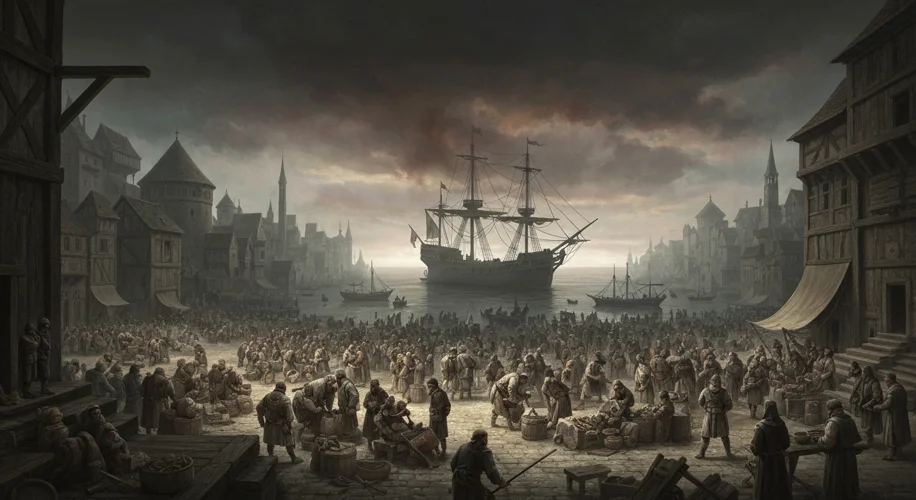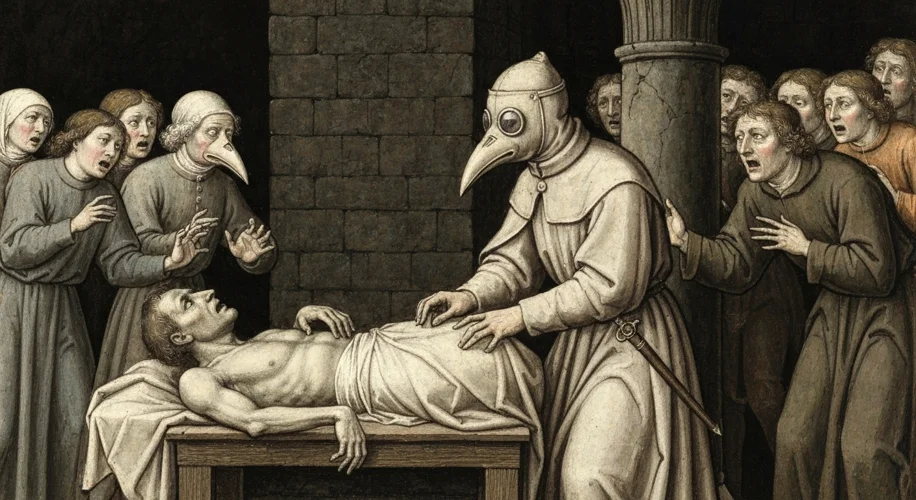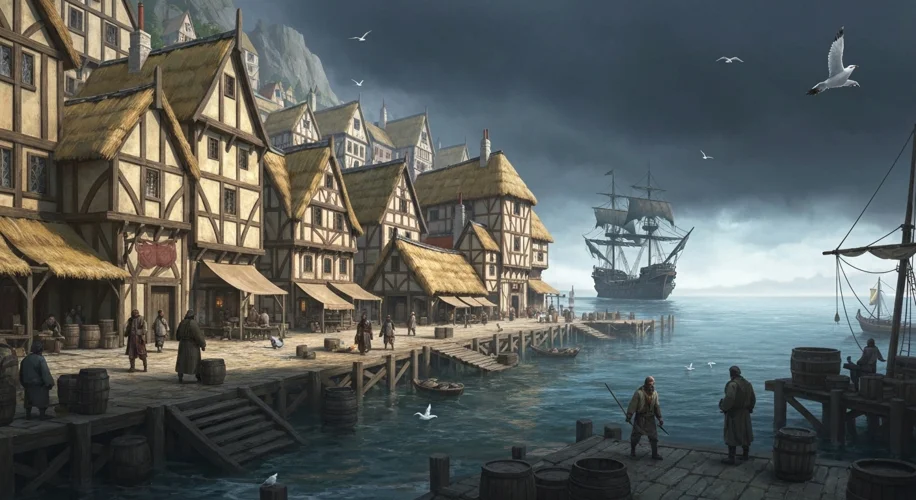The year is 1347. Imagine a world teetering on the brink of despair. Across the vast, interconnected trade routes of the medieval world, a silent, invisible enemy was on the march. It began, most historians believe, in the dusty plains of Central Asia, carried by the fleas that clung to the fur of rats, which in turn hitched rides on merchant ships and caravans.
This was no ordinary sickness. It was the bubonic plague, a vicious cocktail of fever, delirium, and terrifying, swollen lymph nodes known as “buboes” – often blackening and bursting, giving the disease its grim moniker. But the bubonic form was merely one iteration. Pneumonic plague, spread through coughing and sneezing, could kill in days, even hours, while septicemic plague, infecting the bloodstream, was a swift and brutal killer.

The plague’s journey was terrifyingly rapid. From the Black Sea port of Caffa, where Genoese traders are believed to have unwittingly spread it to Europe after contracting it from besieging Mongol forces, it swept like a wildfire. Ships docked in Messina, Sicily, carrying not just goods but the seeds of unimaginable death. From Italy, it marched north, engulfing France, Spain, England, and beyond.
The impact was catastrophic. In towns and cities, the dead piled up faster than they could be buried. Clergy, physicians, and ordinary citizens alike were overwhelmed. Fear became a constant companion. Superstition and religious fervor rose in equal measure. Some saw the plague as divine punishment for humanity’s sins, leading to waves of flagellation, where penitents publicly whipped themselves, hoping to appease an angry God. Others turned to scapegoats, with Jewish communities frequently and brutally blamed, leading to horrific pogroms.
One of the most chilling accounts comes from Agnolo di Tura, a chronicler from Siena, who wrote of the plague’s onslaught: “So many died that all believed it was the end of the world.” He described a harrowing scene: “I…buried my five children with my own hands… And so many died that there was not time to bury the dead, but they were thrown into the ditches and covered with earth.”
By the time the initial wave subsided in the mid-1350s, Europe had lost an estimated 25 to 50 million people – a staggering one-third to one-half of its population. Entire villages were depopulated, farms lay fallow, and the fabric of society was torn asunder.
The Black Death was not merely a demographic catastrophe; it was a social and economic revolution. With labor suddenly scarce, the surviving peasants found themselves in a position of unprecedented power. They could demand higher wages, better working conditions, and greater freedoms. The old feudal order, already strained, began to crack. Serfdom, once a seemingly immutable institution, started to erode.
Economically, the shortage of labor led to inflation as wages rose, and the value of land decreased. Merchants and landowners struggled to adapt to the new economic realities. However, for those who survived, there were opportunities. Wealth was redistributed, and new social classes began to emerge.
Religiously, the plague challenged the authority and efficacy of the Church. Many questioned why prayer and piety had not offered protection. This disillusionment contributed to a growing sense of skepticism and paved the way for future religious reformations. The perceived failure of the established religious order led some to seek more personal and direct connections with the divine.

The Black Death’s shadow loomed for centuries, with recurring outbreaks continuing to plague Europe. Yet, from this immense tragedy, a different world slowly began to emerge. The social and economic shifts accelerated the decline of feudalism, fostered innovation, and ultimately contributed to the cultural and intellectual ferment of the Renaissance. The plague acted as a brutal, albeit unintended, catalyst for change, reshaping medieval society in ways that would echo for generations to come.
It is a stark reminder of humanity’s vulnerability to the natural world and the profound, often unexpected, ways that pandemics can alter the course of history.

